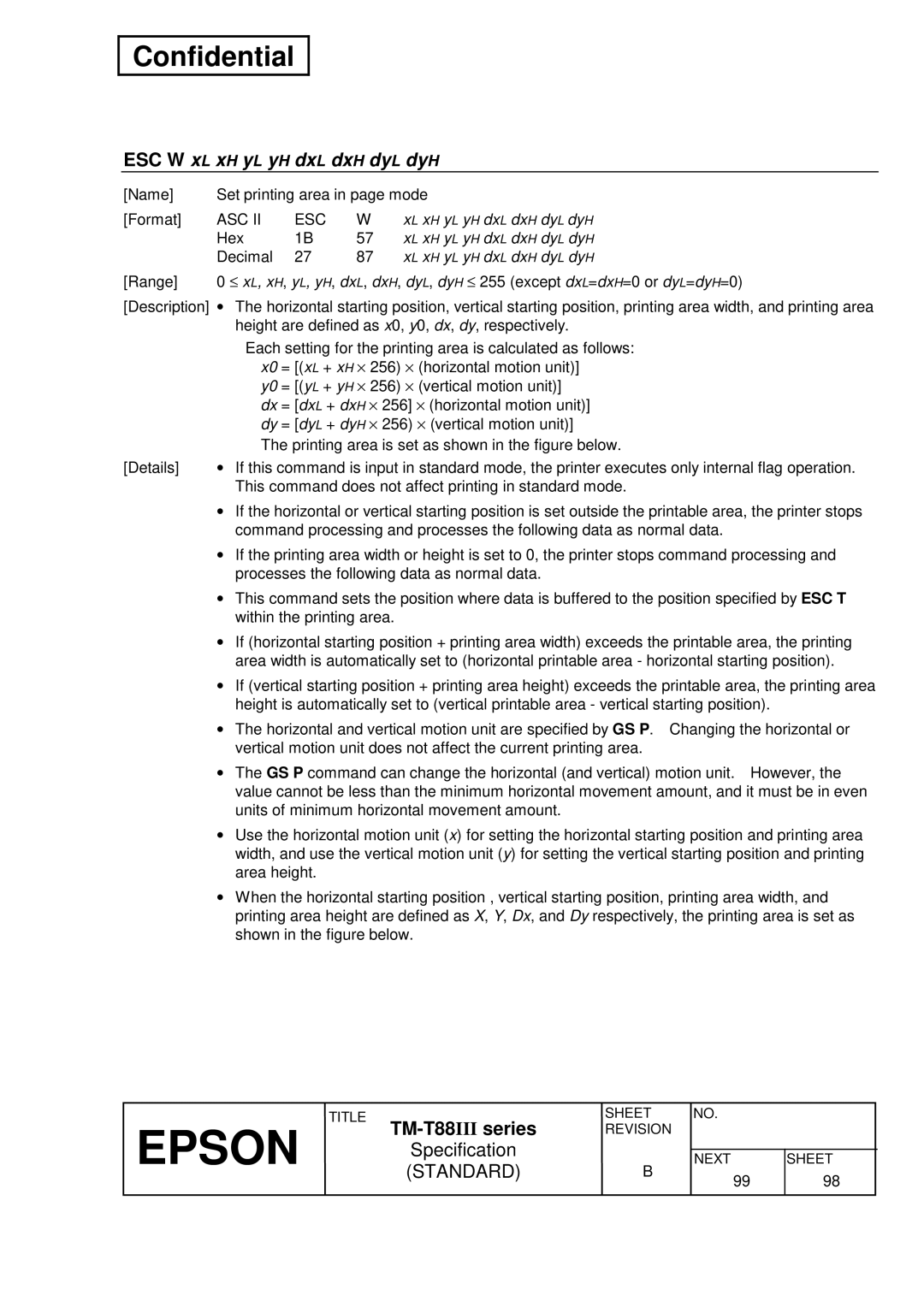TM-T88III Series specifications
The Epson TM-T88III Series is among the most popular thermal receipt printers available in the market, engineered for high performance and versatility in point-of-sale (POS) environments. Known for its reliability and efficiency, the TM-T88III is particularly suited for retail, hospitality, and other service-oriented industries where quick and accurate printing is essential.One of the standout features of the TM-T88III is its ease of use. With a compact design, the printer can fit seamlessly into various workspaces, thereby saving valuable counter space. It features a simple plug-and-play setup, which facilitates quick installations and rapid deployment in any retail or service environment.
In terms of printing capabilities, the TM-T88III supports high-speed printing, with a speed of up to 200 mm per second. This speed is crucial in busy settings, as it significantly reduces customer wait times. The printer utilizes thermal printing technology, which does not require ink or toner, thus resulting in lower operational costs and minimal maintenance. The long-lasting thermal print head ensures that businesses can rely on the printer for thousands of receipts before needing a replacement.
The Epson TM-T88III series also supports multiple connectivity options, including USB, Ethernet, and serial ports. This flexibility allows the printer to integrate seamlessly into existing systems, whether you are using a traditional POS terminal or a mobile device. Furthermore, it supports various operating systems, including Windows, iOS, and Android, making it a versatile choice for businesses.
Additionally, the TM-T88III comes equipped with advanced features such as autocutter technology, which ensures that receipts are cut cleanly and consistently, enhancing the customer experience. Its ability to print graphics, logos, and barcodes adds further value, allowing businesses to customize receipts and promotional messages easily.
Energy efficiency is another characteristic of the TM-T88III, as it complies with international energy-saving standards. This not only contributes to greener business practices but also reduces electricity costs.
In summary, the Epson TM-T88III Series is a reliable, efficient, and feature-packed thermal receipt printer that meets the demands of fast-paced retail and hospitality environments. With its high-speed printing, versatile connectivity options, and user-friendly design, businesses can count on the TM-T88III to enhance their operational efficiency and customer satisfaction. Whether you’re looking for reliability, performance, or cost-effectiveness, the TM-T88III stands out as a preferred choice in contemporary POS printing solutions.

